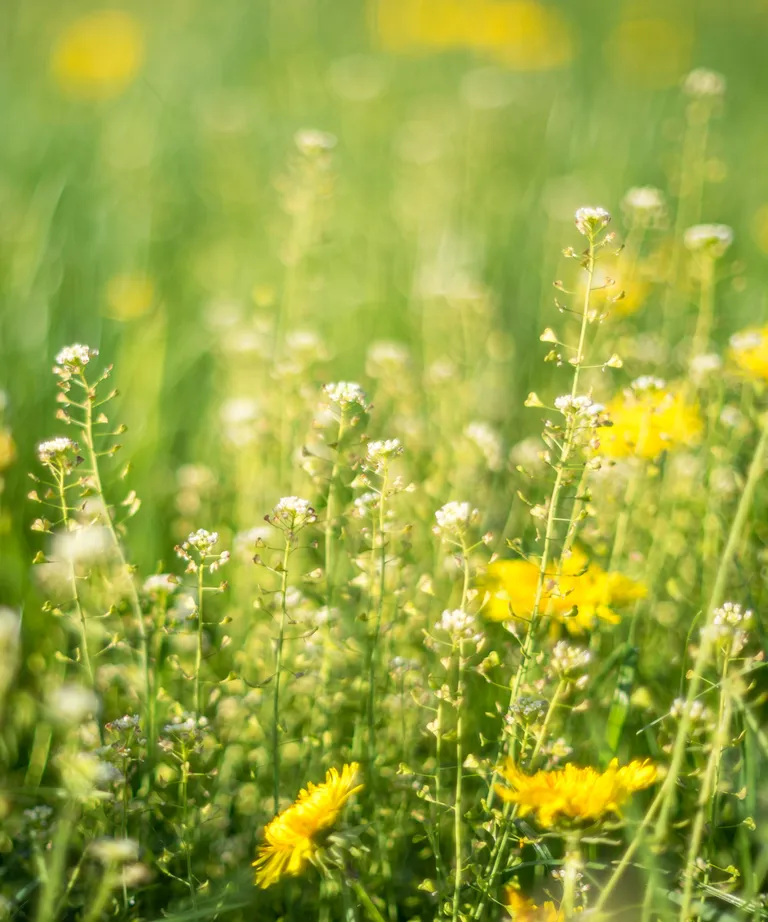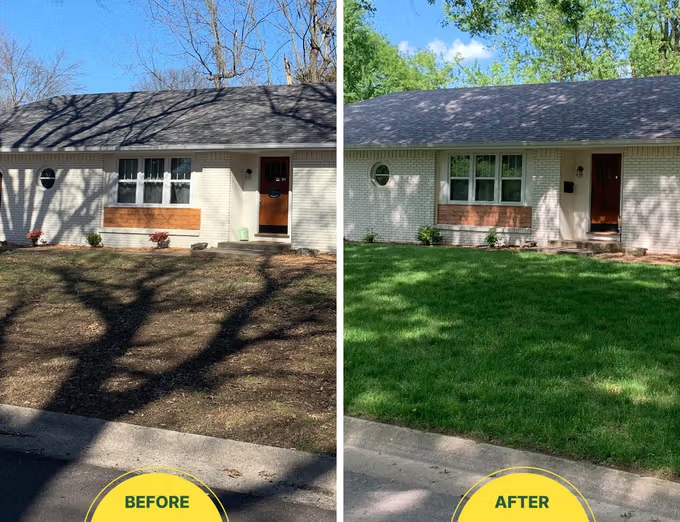Should You Soak Grass Seed Before Spreading?
Last Updated on May 2, 2025 by Duncan
Should you soak grass seed before spreading? The answer is not straightforward. Some seeds benefit greatly from soaking, whereas others do not.
Before you start soaking seeds, figuring out how to encourage them best to germinate is a good idea. Some seeds need to be chilled beforehand, while others require specific scarification methods such as cutting or scraping with sandpaper. Some seeds germinate best in darkness, while others thrive in sunlight.
Benefits of soaking grass seeds
When you soak grass seeds before spreading them across your lawn, you gain control over the most unexpected and risky stage of your lawn’s life: effective seed germination. This comes with substantial benefits that include:
Increased germination rate. Turf seeds get enough moisture and an ideal germination temperature. Only damaged or dried seeds will not sprout this time, ensuring the highest possible germination rate.
Faster germination. Soaking the seeds properly before planting minimizes the time it takes to germinate. For example, using KBG seed kinds, the grass can begin to green 10 days after planting, then 14 to 30 days without seeding.
Reduce water consumption. Soaking the seeds requires only 5 to 10 gallons of water daily to keep 4 to 5 pounds of grass seed moist. Irrigating a 2,000-square-foot lawn with ⅛ to ¼ inch of water per day would require approximately 150 to 300 gallons.
The wind blows and washes away fewer seeds. Soaked grass develops roots several days before non-germinated seeds, allowing the seed to settle into the soil and avoid being washed away.
How to soak grass seed
If you’ve determined that soaking your seeds improves its germination rate, you’ll want to know how to soak seeds before spreading. Fortunately, it’s not difficult. Some of the ways to do it include:
Using a paper towel and plastic bag
This approach is excellent and straightforward when you must soak a few seeds.
What you need to do is to wrap the grass seeds with a damp paper towel. Place the towel in a Ziploc bag.
If you’re using cool-season grass, keep the bag in the refrigerator for 30–120 days. This helps to replicate the cold season conditions of cool-season grasses that grow in the spring. For other varieties, keep the bag in a cold, dark spot and check for evidence of shoots every few days.
When you observe sprouts, and the weather is good, extract the seeds and plant them in properly prepared soil.
Soaking the seeds in a bucket of water
This process is ideal when you are looking to soak many seeds at once.
Choose your grass seed and set aside the amount you need. Check the weather to ensure the seeds can be planted when cool enough but not too cold.
Soak your seeds in water for 24 hours in a warm environment, such as a heated shed or garage.
You can use storage tubs, buckets, or pots without drainage holes. Stir the bucket once or twice daily to ensure the water is evenly distributed.
After three days, look for signs of seed shoots emerging. You may need another day or two, but be prepared to plant the seeds when you notice sprouts.
Sow your seeds in well-aerated grass. Use germination sheets or netting to keep birds away from them if possible.
Soaking the seeds in hydrogen peroxide
Soaking seedlings in hydrogen peroxide is another strategy you can use to help in germination. A hydrogen peroxide soak, like other techniques, is not effective for all seeds, so research the specific seed first.
You should consider using diluted hydrogen peroxide solutions to prevent embryo harm. For example, you can use a solution such as a 3% solution instead of 100%.
How to spread soaked grass seed
To ensure your pre-germinated grass seed thrives, follow these procedures for even distribution and optimal growth.
Moisten the Soil: Begin by softly wetting the prepared soil to provide a comfortable, humid environment for the seeds.
Spread the Seeds: Carefully disperse the soaked seeds around the allocated area. For larger areas, use a broadcast spreader.
Gently rake and press the earth to cover the seeds softly. Next, use a lawn roller or carefully walk over the area to push the seeds into the soil, providing proper contact for successful germination.
Cover: Cover the seeded area with a thin layer of straw or a germination blanket to protect your seeds from birds and retain the required moisture.
When followed carefully, these strategies will help in the successful establishment of your grass, improving its health and vitality.
Remember to water the soaked seeds.
Once the seeds have been dispersed, irrigate the area twice to four times daily for 5 to 10 minutes each. Water your newly planted grass ⅛ to ¼ inch each day, or 3 to 4 inches per week (including rainfall).
The watering strategy remains the same as when using dried seeds. However, the time frame varies. You’ll need to stick to this vigorous irrigation regimen for a few days to a week rather than two weeks.
Once most grass seeds have sprouted leaves, gradually reduce watering until the lawn is irrigated once or twice a week with 1 to 1.5 inches of water. Depending on the weather and soil type, this could take 3 to 4 weeks.
FAQs
What is the fastest-growing grass seed?
Ryegrass is the fastest-growing grass seed variety, needing only five to ten days to germinate. If you want to combine it with a slow-growing turf variety, such as KBG, soak the slow-growing grass seed to ensure equal coverage of both species on your lawn.
How effective is seed soaking?
Seed soaking reduces germination time to the minimum required for your grass species. For example, perennial ryegrass takes five to ten days to germinate.
When adequately soaked, the procedure can generally be completed in five to six days (including pre-germination) rather than eight to ten. Remember that the weather, soil quality, and after-seeding maintenance impact the results.
Can grass seed germinate on top of the soil?
Yes, grass seeds can germinate on top of the soil. However, germination rates may be reduced if seeds are not scraped into the topsoil or covered with straw mulch. Heat, dryness, runoff, wind, and birds all have a greater impact on seeds left on the ground.


